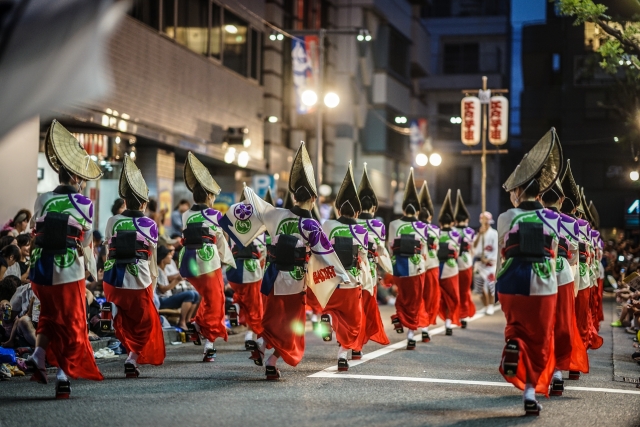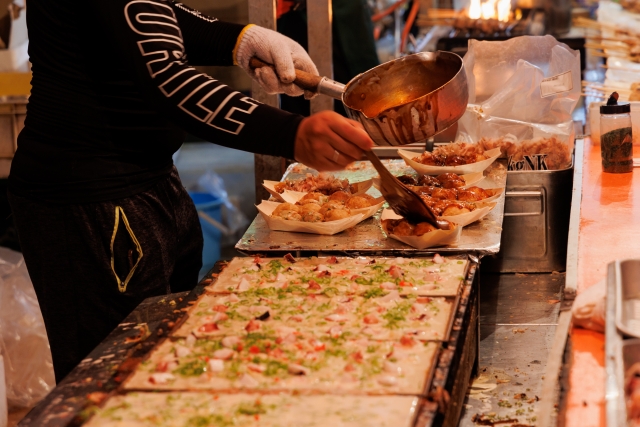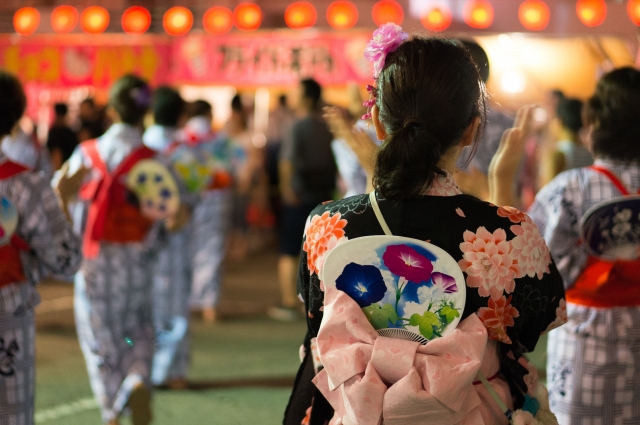Summer in Japan comes alive with vibrant festivals(matsuri) that showcase centuries of tradition and culture.
These matsuri celebrations, found throughout the country, offer visitors an unforgettable glimpse into Japanese heritage through dynamic performances, traditional music, and local customs.
This guide will help you experience and understand these fascinating cultural events.
What is a “Matsuri”?
A matsuri (祭り) is a traditional Japanese festival that has been celebrated for centuries.
These festivals originally served as religious ceremonies at Shinto shrines and Buddhist temples, though many have evolved to become community celebrations that bring people together.
Several key elements define a traditional Japanese matsuri:
- Religious Significance – Many festivals begin with Shinto ceremonies to honor local deities
- Community Participation – Local residents play central roles in organizing and performing festival activities
- Traditional Performance – Including taiko drumming, dance, and mikoshi processions
- Seasonal Celebration – Festivals often mark important points in Japan’s seasonal calendar
Major Summer Festivals Across Japan

Summer festivals range from enormous city-wide celebrations to intimate local gatherings.
Here are some of Japan’s most significant summer festivals, organized by region:
| Festival Name | Location | Main Features |
|---|---|---|
| Gion Matsuri | Kyoto | Month-long festival featuring grand processions |
| Nebuta Matsuri | Aomori | Giant illuminated floats and dance parades |
| Tenjin Matsuri | Osaka | Boat processions and fireworks |
| Awa Odori | Tokushima | Traditional dance festival |
Each of these festivals has unique characteristics that reflect local history and traditions.
Notable highlights include:
- Kyoto’s Gion Matsuri – One of Japan’s oldest festivals, featuring massive decorated floats called yamaboko
- Aomori’s Nebuta Matsuri – Known for its enormous illuminated paper floats depicting warriors and mythical figures
- Osaka’s Tenjin Matsuri – One of Japan’s top three festivals, combining land and river processions
Important points

To fully appreciate and enjoy Japanese summer festivals, there are several key aspects visitors should understand.
Traditional Festival Foods
Festival food stalls, known as “yatai: 屋台“, are an essential part of any matsuri experience.
These stalls offer a variety of traditional summer festival foods that are deeply connected to Japanese culture and seasonal celebrations.
Popular festival foods include:
- Yakisoba – Stir-fried noodles with vegetables and meat
- Takoyaki – Savory octopus balls, an Osaka specialty
- Kakigōri – Shaved ice with flavored syrup
- Wataame – Cotton candy with unique Japanese flavors
Festival Clothing and Etiquette
Proper attire and behavior are important aspects of participating in Japanese festivals.
Many visitors and locals alike choose to wear traditional summer clothing to enhance their festival experience.
| Clothing Item | Description | When to Wear |
|---|---|---|
| Yukata | Light cotton summer kimono | Evening festivals, firework events |
| Jinbei | Traditional two-piece summer wear | Daytime festivals, casual events |
| Geta | Traditional wooden sandals | With yukata or jinbei |
Basic festival etiquette guidelines:
- Shrine Respect – Follow proper shrine visiting procedures if the festival includes shrine visits
- Queue Culture – Respect lines at food stalls and popular attractions
- Space Awareness – Be mindful of personal space, especially during crowded events
Festival Activities and Games
Summer festivals offer a variety of traditional games and activities that have been enjoyed.
These activities provide entertainment and the chance to win small prizes while experiencing Japanese culture.
Common festival activities include:
- Kingyo-sukui – Goldfish scooping with paper nets
- Yo-yo tsuri – Water balloon fishing
- Shooting galleries – Air gun target practice with prizes
- Ring toss – Traditional ring throwing games
Many festivals also feature special performances and demonstrations:
| Performance Type | Description |
|---|---|
| Bon Odori | Traditional folk dance performances |
| Taiko | Japanese drum performances |
| Mikoshi | Portable shrine processions |
Planning Your Festival Visit
Understanding the schedule, access, and practical tips will help you fully enjoy these vibrant celebrations.
Festival Schedules
While specific dates may vary slightly year to year, many major festivals occur at consistent times during the summer months.
Festival seasons generally align with these periods:
| Period | Festival Types | Notable Events |
|---|---|---|
| Early July | Tanabata Festivals | Star festivals, wish-making celebrations |
| Mid-July | Gion Festivals | Traditional float processions |
| Early-Mid August | Obon Festivals | Ancestral remembrance, dance festivals |
Transportation and Access
Most major festivals are easily accessible by public transportation, though services may be modified during festival periods.
Key transportation considerations:
- Special Festival Trains – Many railways offer extended service during major festivals
- Shuttle Buses – Temporary services often connect stations to festival grounds
- Walking Access – Some areas may be closed to vehicles during festivals
Festival Survival Tips
Summer festivals in Japan can be crowded and hot, so proper preparation is essential.
Essential items to bring:
- Cash – Many festival vendors don’t accept cards
- Folding Fan – For relief from summer heat
- Water Bottle – Stay hydrated during hot festival days
- Small Towel – Common in Japan for summer heat
- Comfortable Footwear – Expect lots of walking and standing
Japanese summer festivals offer a unique window into the country’s rich cultural heritage while providing unforgettable entertainment and experiences.
Whether you’re watching spectacular fireworks displays, sampling traditional festival foods, or participating in ancient customs, these matsuri celebrations create memories that will last a lifetime.



comment